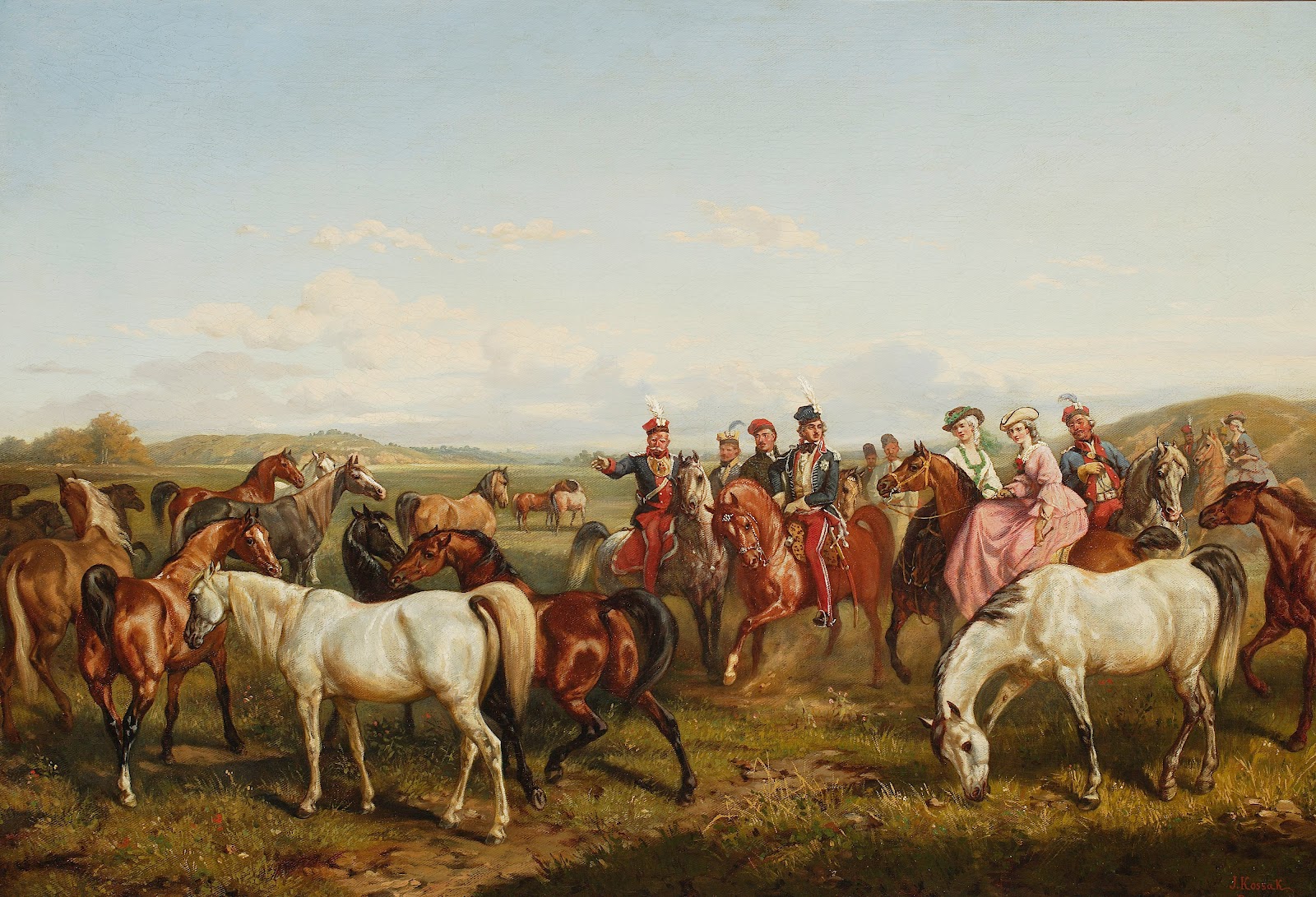Salvete Omnes,
a short entry -
Juliusz Kossak's paintings have graced these blog 'pages' for many years.
National Museum in Warsaw has a good size copy of his painting on their digital collections webpage- Mohort prezentujący stadninę [Mohort presenting the herd ...to prince Jozef Poniatowski], painted in 1858AD. Unusually this painting is an oil on canvas work, whereas the typical medium used by Juliusz Kossak was watercolor (with some gouache, ink etc) .
Here, the main protagonist is a fictitious 'knightly' soldier-cavalryman, the defender of the Borderlands, the hero of Wincenty Poll's epic poem - Mohort. He rides next to a real hero and the last knight of the Old Poland - prince Jozef Poniatowski.
The three main male characters are portrayed in the late XVIII century Polish cavalry uniforms, while the ladies are perhaps dressed in some riding attire of that period? , I am not versed in the female fashions of the ear.
The site is somewhere in the Old Poland's southern or eastern lands, that make today's central Ukraine, our Polish lost mythical Kresy or Borderlands.
The horses painted on this canvas most likely come from numerous sketches and in situ observations maestro Juliusz Kossak made while visiting Polish studs and herds in those lands. He was friends with many Polish breeders and land owners of the era, painted many portraits of their horses and herds, while the very old Polish lands had been divided between the Russian Empire and Austro-Hungarian one during the three Partitions of Poland (1772-1795); and in the past these lands were always Polish Crown centers of horse herds and war horse production. We suspect that the so called Old Polish Horse, used by the winged hussars and National Cavalry & Uhlans came from the Ruthenian and Podolian farms.
Perhaps it is worth noting that the majority of these fine Polish stud farms, breeding Polish Arabians as well, were destroyed during the World War I, Bolshevik Revolution and the independence wars after the dissipation of both empires 1917-20
Valete

No comments:
Post a Comment